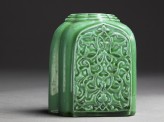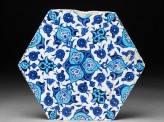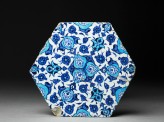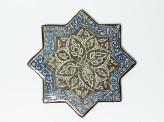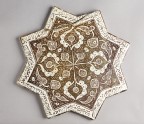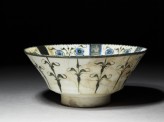Room 31 | Islamic Middle East gallery
Explore artefacts made over a period of more than 1000 years in the heart of the Islamic world.
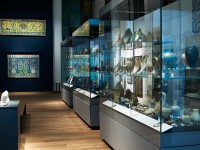
Flowers and plants are universally used as decorative patterns. In the arts of the Islamic world they appear in architectural decoration as well as on all kinds of objects.
A particularly Islamic form of plant-like decoration is the so-called ‘arabesque'. The word was coined in Europe to describe an interweaving stem branching into split leaves and secondary stems. It covers any given surface with a regular and rhythmical network which can extend endlessly.
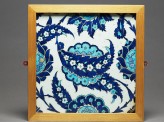 Tile with serrated leaves and flowers (EA1978.1527)
Tile with serrated leaves and flowers (EA1978.1527)
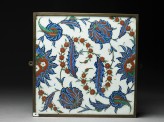 Tile with serrated leaves and flowers (EAX.3215)
Tile with serrated leaves and flowers (EAX.3215)
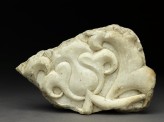 Fragment of an architectural frieze with lotus blossom and half-palmette (EA1974.28)
Fragment of an architectural frieze with lotus blossom and half-palmette (EA1974.28)
Notice
Objects may have since been removed or replaced from a gallery. Click into an individual object record to confirm whether or not an object is currently on display. Our object location data is usually updated on a monthly basis, so contact the Jameel Study Centre if you are planning to visit the museum to see a particular Eastern Art object.
© 2013 University of Oxford - Ashmolean Museum

